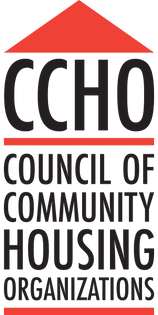Apple, Google and Facebook committed $4.5 billion for housing. Now comes the hard part
As Apple built the Bay Area’s most valuable building, its new $3.6 billion headquarters that opened in 2017, the housing shortage intensified. The tech giant stayed largely out of it, paying $5.85 million to help fund only 19 affordable housing units in its hometown of Cupertino. It was neutral as a battle raged over the last few years about redeveloping its neighbor, the defunct Vallco Mall, into housing and offices.
That changed this week, with Apple committing $2.5 billion to housing. The company is pledging $1 billion for a housing investment fund, $1 billion for first-time home buyers mortgage assistance, $300 million worth of Apple-owned and available land for affordable housing in San Jose, $150 million for a Bay Area affordable housing fund and $50 million to help fight homelessness.
Now comes the hard part.
The iPhone maker could have an impact on the region’s housing crisis, particularly alongside $1 billion commitments each from Google and Facebook this year, experts say. But money isn’t the only obstacle: As Vallco demonstrates, some Silicon Valley residents strongly oppose major new projects and some question if tech giants’ money will do much to change that.
Cupertino has a track record of using “every available tool to try and stop housing from being built at” Vallco, said Salim Furth, a senior research fellow at George Mason University’s Mercatus Center.
He contrasted Apple’s approach with that of the Partnership for the Bay’s Future, which is partly focused on housing policy and has a fund that rewards cities that plan and approve dense, transit-oriented development.
“Apple is targeting its money less effectively than some of its predecessors,” said Furth.
SUBSCRIBER BENEFIT
Did you know you have 10% off at San Francisco Wine School?
Apple’s commitment to assist first-time home buyers, including teachers and veterans, could exacerbate housing demand without increasing supply, Furth said.
“The supply side is where the bottleneck is,” he said. “The problem isn’t that first-time home buyers don’t have enough resources for a down payment.”
Leslye Corsiglia, executive director of SV@Home, an affordable-housing advocacy group in San Jose, plans to meet with Apple and other companies to boost their policy engagement. Facebook gave $1 million to the Partnership for the Bay’s Future advocacy fund, but that is a tiny amount compared to its $1 billion commitment.
“It’s really great to get all this land and money, but in order to get units under construction and moving forward, we need to get project approvals,” she said. “That does require policy and advocacy work to get the votes to move forward.”
Matt Franklin, president of affordable-housing developer MidPen Housing, said that the steady stream of housing-related announcements shows that big tech companies “understand that housing affordability is a great threat to the local, regional and state economy.”
He said he was encouraged that Apple is setting aside $50 million for the group Destination: Home to help the homeless, and $150 million for Housing Trust Silicon Valley, which is focused on first-time home-buyer loans, loans to affordable housing developers and homelessness prevention.
“These are organizations with proven solutions,” he said.
Apple’s $1 billion line of credit for affordable housing development is trickier, he said. Apple plans to deploy the money over the next two years and reinvest returns in projects over five years.
“Having a line of credit that is nimble and can help tie up land is helpful, but what would be more helpful is having some subsidy that can stay in the deal,” said Franklin. “It’s all going to depend on the terms and conditions of these investments. That will determine how impactful these announcements are.”
Apple provided few details about its plans and didn’t respond to a request for more information. The state’s mortgage lending arm, the California Housing Finance Agency, didn’t have any information about Apple’s home-buyer assistance plans.
The agency has an existing down-payment-assistance program for first-time buyers that provides a fixed-rate loan of 3.5% for homes costing up to $765,000. The income eligibility limit is $228,000 per buyer in Apple’s home, Santa Clara County. Last year, 12,050 people statewide used the program.
Fernando Marti, co-director of the Council of Community Housing Organizations, a group that includes tenants-rights and affordable-housing developers, said that while it’s “great that the tech giants are trying to outdo each other” with contributions, they are also driving the need with their breakneck growth.
“It would be nice to know how this investment compares to the affordable-housing needs created by the employment growth of these businesses,” he said. In the past eight years, the Bay Area added around 676,000 jobs but only 176,000 new housing units, according to the Bay Area Council, a business group.
Adhi Nagraj, senior vice president for McCormack Baron Salazar, which builds both market-rate and affordable housing, said he was impressed with Apple’s approach as well as the size of commitment. He said the $1 billion loan fund could be “incredibly useful to us to be able to purchase land and develop affordable housing at a lower price point.”
The most pressing need is pre-development money that can be used for buying sites and taking projects through the design and approval process, he said.
Corsiglia of SV@Home hopes that tech companies and corporations stay committed to funding housing beyond a few years, since projects can take longer to plan and build.
“We don’t need short-term money. We need long-term money,” she said.
